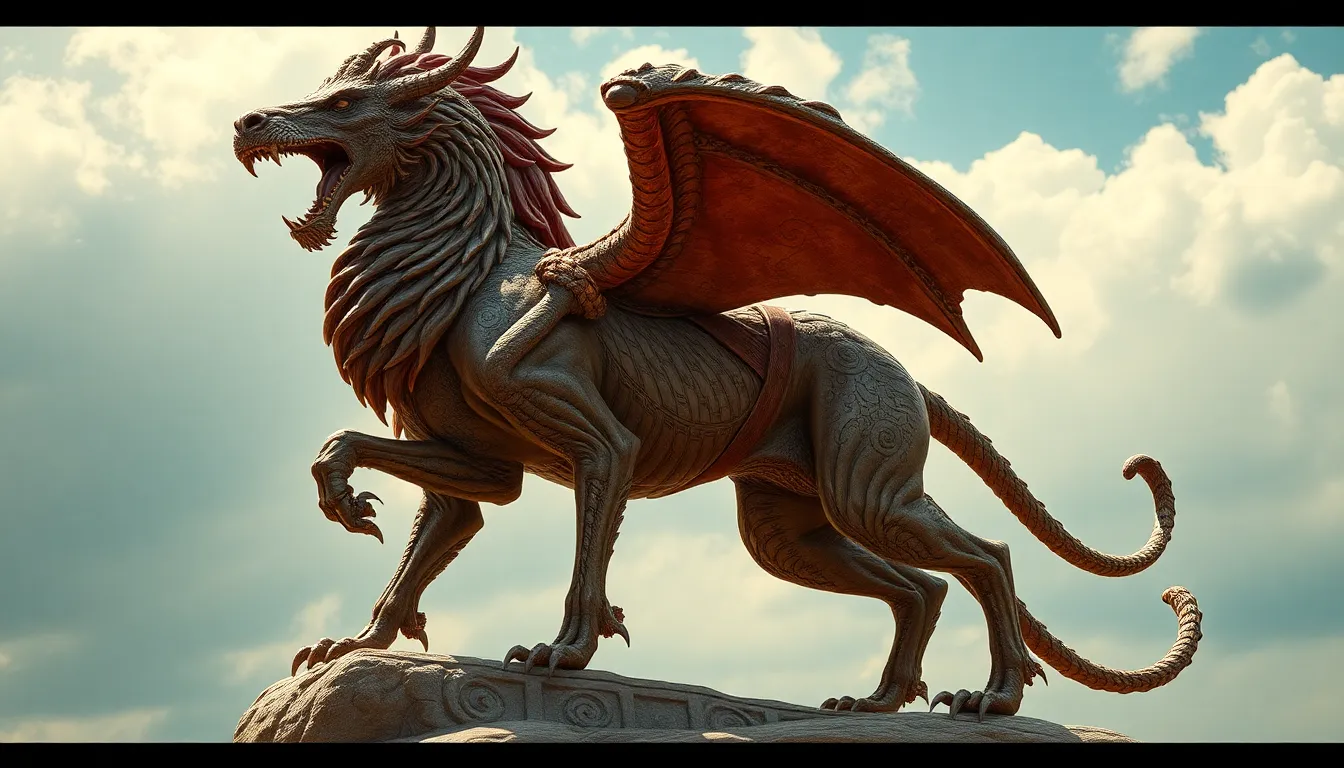The Chimera in Mythological Adaptations: From Page to Screen
I. Introduction
The Chimera, a creature of fire and legend, is one of the most fascinating figures in mythology. Often depicted with the body of a lion, the head of a goat protruding from its back, and a tail that ends with a snake’s head, the Chimera embodies the concept of chaos and the blending of various elements. Its significance stretches across various cultures, symbolizing the fears and challenges faced by humanity.
This article aims to explore the adaptations of the Chimera in literature and film, tracing its journey from ancient myths to contemporary interpretations. We will examine how this mythical beast has been represented through different eras and mediums, highlighting its symbolic meanings and cultural impact.
II. The Origins of the Chimera in Ancient Mythology
The Chimera’s origins can be traced back to ancient Greece, with historical accounts provided by sources such as Homer and Hesiod. In these texts, the Chimera is described as a monstrous hybrid, often associated with destruction and the chaos of nature.
Its characteristics and symbolism are rich and multifaceted:
- Physical Attributes: The Chimera is typically represented as a fire-breathing creature with the body of a lion, a goat’s head, and a serpent for a tail.
- Symbolism: It symbolizes the fear of the unknown, chaos, and the blending of different worlds.
In Greek mythology, the Chimera is often depicted as a formidable adversary for heroes, most notably in the story of Bellerophon, who ultimately slays the creature with the aid of the winged horse Pegasus. This myth highlights the Chimera’s role as an embodiment of challenges that must be overcome by heroes.
III. The Chimera in Classic Literature
In ancient texts, the Chimera is a prominent figure. Homer’s “Iliad” and Hesiod’s “Theogony” present the creature as a fearsome opponent, showcasing its terrifying nature and the courage of those who confront it.
As literature evolved through the medieval and Renaissance periods, the Chimera’s depiction also transformed:
- Medieval Literature: The Chimera appeared in bestiaries and allegorical works, often representing sin and moral failings.
- Renaissance Works: Writers like Dante Alighieri incorporated the Chimera into their narratives, using it as a symbol of deception and illusion.
Furthermore, the Chimera influenced allegorical and philosophical works, where it was used to explore themes of identity, duality, and the nature of reality.
IV. The Chimera in Modern Literature
In contemporary literature, the Chimera continues to captivate writers and readers alike. Modern novels and stories often reimagine the creature in various contexts:
- Contemporary Novels: Authors like Salman Rushdie have used the Chimera as a metaphor for cultural hybridity and the complexities of post-colonial identity.
- Thematic Interpretations: The Chimera is frequently interpreted as a symbol of inner conflict, representing the clash between different aspects of the self.
This metaphorical approach allows for a deeper exploration of themes such as fear, acceptance, and the nature of existence, making the Chimera relevant in a modern context.
V. The Chimera on Screen: Early Film Adaptations
The early cinematic interpretations of the Chimera were marked by limited special effects and imaginative storytelling. Films from the early 20th century attempted to bring this mythical creature to life, often using practical effects and creative narratives that emphasized the Chimera’s fearsome nature.
Visual choices included:
- Use of puppetry and animatronics to depict the Chimera’s hybrid nature.
- Stylized cinematography to evoke a sense of otherworldliness.
The reception of these early films varied, but they played a crucial role in establishing the Chimera as a creature worthy of cinematic exploration, paving the way for more sophisticated adaptations in the future.
VI. The Chimera in Contemporary Film and Television
In recent years, the Chimera has made appearances in notable films and television shows, often enhanced by advanced special effects and creative storytelling. Examples include:
- Fantasy Films: Movies such as “Percy Jackson & the Olympians” and “Clash of the Titans” feature the Chimera as a significant antagonist, showcasing its terrifying attributes with cutting-edge CGI.
- Television Shows: Series like “Game of Thrones” incorporate Chimera-like creatures, blending myth and fantasy in compelling narratives.
The audience reception of these adaptations has generally been positive, with viewers appreciating the innovative portrayals and the creature’s symbolic depth. Critics have noted how modern adaptations often emphasize themes of resilience and the struggle against chaos.
VII. The Chimera Across Different Cultures and Genres
The Chimera’s portrayal is not limited to Western adaptations; it appears in various forms across different cultures and genres. In Eastern mythology, similar creatures embody chaos and unpredictability, reflecting universal fears and challenges.
Exploring the Chimera in diverse genres reveals its versatility:
- Horror: The Chimera can be seen as a representation of existential dread, appearing in horror narratives as a symbol of humanity’s darkest fears.
- Science Fiction: The concept of genetic engineering often invokes the Chimera, as scientists create hybrids that challenge the boundaries of nature.
This cross-cultural exploration underscores the Chimera as a universal symbol, resonating with audiences worldwide and adapting to various storytelling forms.
VIII. Conclusion
The journey of the Chimera from ancient mythology to modern adaptations illustrates its enduring appeal and significance. As a symbol of chaos, hybrid identity, and the human struggle against adversity, the Chimera continues to inspire artists and creators across cultures.
Reflecting on its legacy, it becomes clear that the Chimera is not merely a mythological beast but a powerful representation of our fears and hopes. As media continues to evolve, the Chimera will undoubtedly find new forms of expression, reminding us of the rich tapestry of stories that shape our understanding of the world.
In the future, we can anticipate even more innovative representations of mythological creatures like the Chimera, as storytellers explore the depths of human experience through these timeless symbols.




